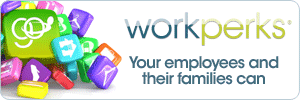Score an ‘A’ in E-tiquette
By Laurie Glasser, CHRP
Email has become an important daily communication tool. For many, it is used as much – or even more than – the telephone or person-to-person dialogue.
While email has many efficiency advantages, it can be time consuming and, yes, inefficient. Many of us now receive 50 emails a day. A large percentage of those require acknowledgement or action.
 It is becoming increasingly important to be respectful of your recipients’ time and to implement strategies to optimize this communication tool.
It is becoming increasingly important to be respectful of your recipients’ time and to implement strategies to optimize this communication tool.
I attended a BC HRMA presentation by Marian Gushue-Geiger, CHRP that was based on the book The Hamster Revolution by Mike Song. Below are some highlights to use and share.
Strengthen the Subject Line:
- Some brief messages can be contained to the subject line. “That’s fine-LG” can reduce the time required for opening the email. Your initials at the end would indicate that is the end of your message. This is especially efficient if they pick up the message on their smart phone.
- Prefacing the Subject Line with Urgent; Approval; Read; Reply; FYI will provide the action required
- The subject line should reflect the subject matter. If the original topic has evolved into an unrelated topic, update the subject line for easy reference and retrieval.
Email Body:
- Use brief greetings.
- Get to the point quickly.
- Use bullet-form so your points can be grasped quickly with fewer words.
- Keep communication clear and concise.
- Get into the habit of ensuring your email messages contain the purpose, the action and a response time if required. Ensure your reply emails answer all the questions to avoid a repeat request/email. If you don’t require a reply, state NRN (no reply needed).
Closing
- Use the email auto-signature feature to provide your company name, title and contact information to save time and confusion.
Influence Your Volume
Send less – get less! Assess whether an email is: Needed? Appropriate? Targeted correctly?
- Ask yourself if the recipients ‘need’ the information.
- Emails should be written mindfully and appropriately to avoid being misconstrued. The recipient can only see the words in the message – they cannot get further communication messages through your tone and body language.
- Avoid writing comments that are negative or you could regret if it was forwarded to others or printed in a newspaper (the ‘litmus’ test).
- Your ‘target’ goes back to who ‘needs’ the message. Using ‘reply to all; cc; and distribution lists are often overused, reducing efficiency for many.
- Manage your time better by restricting how often you check your emails – a couple of times a day may be sufficient.
Ask yourself: “Is email the best technologyto use for this communication?”
- Email isn’t always the most efficient form of communication. E.g. Conflicting schedules can cause multiple emails. If you are trying to arrange a meeting time with someone, a callmay be quicker to establish availability and get it on the calendar.
- To shorten decision timelines when it is holding action up, schedule a huddle-meeting, or schedule a conference call.
With a little forethought and practice, you can optimize your email communication. Lead by example and suggest some of these practices to improve efficiency levels in your organization.
Laurie Glasser, CHRP, is the owner of Kelowna Human Resources Consulting. She offers more than 20 years of diverse HR expertise and is a graduate of the University of Calgary’s Management Development/HR program. The thrust of her business focuses on handling the HR needs of small businesses, providing all the benefits of an in-house HR department without the payroll cost. More information can be found on her website at www.kelownahr.com.








